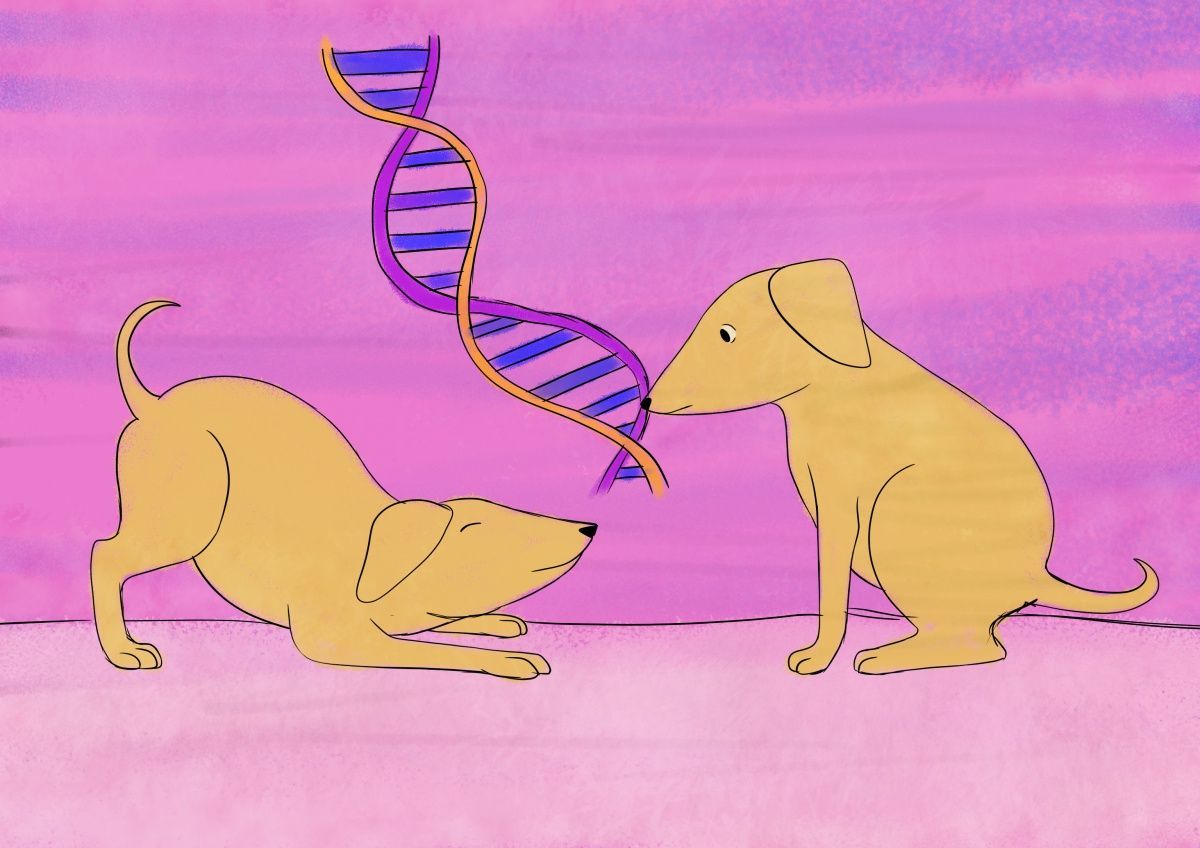Brother From Another Mother
Identical people can be entirely unrelated

Identical people can be entirely unrelated
Call it vain, but we give a great deal of attention and care to the way that we look. The way individuals look is an integral aspect of their identity and tells us a great many things about them. Our appearance, our physical traits, are markers of race, age, and even social class. They tell us about our parents and their parents, and even social standing can be gleaned from a glance.
We carry many generations of people that came before us, in our faces. In fact, you can tell if and to what extent two people are related based on how similar they look. Distant relatives, not so much, but siblings definitely, and if two people look exactly alike, they must be twins. Right? Well, kind of.
It might surprise you to learn that there are non-twins who resemble each other, real-life doppelgängers. Artist François Brunelle has been photographing such look-alikes from around the world. This compelled recent scientific research into what makes these people look alike. Answering this question would inform us why we look the way we do.
To undertake the study, scientists first confirmed that the look-alikes objectively looked the same. After all, what might look similar to me may not look the same to you and may not look similar to the same degree. To obtain an objective measure, a reliable way of measuring similarity in faces, the researchers used three different methods of facial recognition. These were based on neural networks.
Neural networks are complex software programs that can recognize patterns and make connections when given a large amount of data. All these models have been trained on thousands of faces, using millions of parameters to represent a face. When provided with two faces, these models provide a score between 0 and 1. 0 means that the two faces shown are entirely different and 1 means that they are the same face. Scores for the look-alikes were close to those for images of twins (taken from the University of Notre Dame twins database). This tells us that we weren’t just imagining it when we thought that two people who have no connection to each other, look alike, at least as similar as twins.
To understand why the look-alikes look alike, researchers probed three factors that define our biology: DNA, epigenome and microbiome.
DNA (or the genome) is the chemical code we inherited from our parents, running all our cells. The code consists of long chains made up of 4 molecules: A(denine), T(hymine), G(uanine) and C(ytosine). A length of DNA that codes for a specific inheritable trait is known as a gene. The reason why identical twins look the same is that all their genes are exactly the same.
The epigenome represents the effect of the environment. Throughout your life, genes in your DNA can be switched on or off due to environmental factors, explaining why identical twins might develop different responses to different diseases. The information on which genes have switched constitutes the epigenome. The NASA Twins Study is an example of how the epigenome affects twins. In this study, one twin was shipped off to space to live on the International Space Station for a year while the other stayed on Earth. Studying the changes in their (identical) biology informed scientists on how the environment affects us.
And lastly, the microbiome is the set of all bacteria, viruses, fungi and other microorganisms that live on or inside you. You might have over 39 trillion microbial cells in your microbiome (compare it to your 30 trillion human cells). That’s almost about the number of different possible configurations of a Rubik’s cube. The microbiome in the mouth is related to obesity. So researchers suspected that it could affect the fat in the face and maybe the looks of a person.
To study these three factors, researchers used the saliva of the subjects. Yes, spit. Saliva contains information about all three factors: the DNA, epigenome and microbiome.
To extract the DNA from saliva, the researchers added it to a material to pull out RNA, the stuff involved in making proteins. Pulling out DNA from the nuclei of cells is impractical so instead we resort to recreating the DNA from RNA, which are lengths of code that are like mirror images of the DNA. The RNA can be used to prepare complementary DNA. They subsequently placed this on an SNP microarray.
An SNP microarray is a plate with many, many tiny wells, each of which has the DNA sample of a select gene. They added the complementary DNAs of the saliva of both the look-alikes on the same microarray. These complementary DNAs are enabled to fluoresce (so they emit green or red light under a laser light). If both the samples have a gene, the DNA in the well binds to the corresponding DNA in the saliva, then the particular well emits both green and red light i.e. shades of brown. If only one of the samples has the gene, it emits either green or red, depending on the sample. This way, they can identify which genes can be present in humans and which of them are in both the look-alikes. They studied about 4 million genes.
The saliva was similarly mixed with different substances to extract RNA corresponding to the epigenome and microbiome and put on microarrays to study which parts are in common and which are not.
The results showed that look-alike pairs had 1794 genes that resembled highly. The epigenome and microbiome did not show similarities, suggesting that only genes play a crucial role in determining looks. They then looked into the Genome-Wide Association Studies (GWAS) database to understand the functions of these genes. GWAS is a database that tells which physical trait is associated with which genes.
To find out which genes affect a physical trait, say black hair, scientists collect the genes of about a million people who have black hair and a million who don’t. They compare the genes of these groups and see which genes differ between the two groups more than expected. The genes that vary the most between the two groups could be related to black hair, assuming all the other physical traits distribute equally between the two groups.
They discovered that the genes common across look-alikes corresponded to facial or physical features such as eye colour, hip circumference, height, waist-hip ratio, etc. It became clear that the reason the look-alikes looked similar was because of the similarities in their genes. They also ruled out any common ancestry, being related would defeat the meaning of this entire exercise. The ancestry genes did not resemble in the look-alikes, that is their lineages separated too far back in history for genealogy to account for similarity
Surprisingly, these human pairs had similarities that extended beyond looks, similarities that extended far beyond the direct influence of genes. The participants completed a biometric and lifestyle questionnaire which measured traits like weight, height and behavioural qualities such as whether they smoke and their education. These traits were more similar than random in look-alike pairs, suggesting that the genes they share affects even their habits and behaviour.
Just imagine, when you look into a mirror the next time, that perhaps you aren’t the only one who has that face. The face by which you are identified by everyone may not even be yours. Does your face really say all that much about you? Well, it does say quite a lot about your genes, and maybe someone else’s too.
